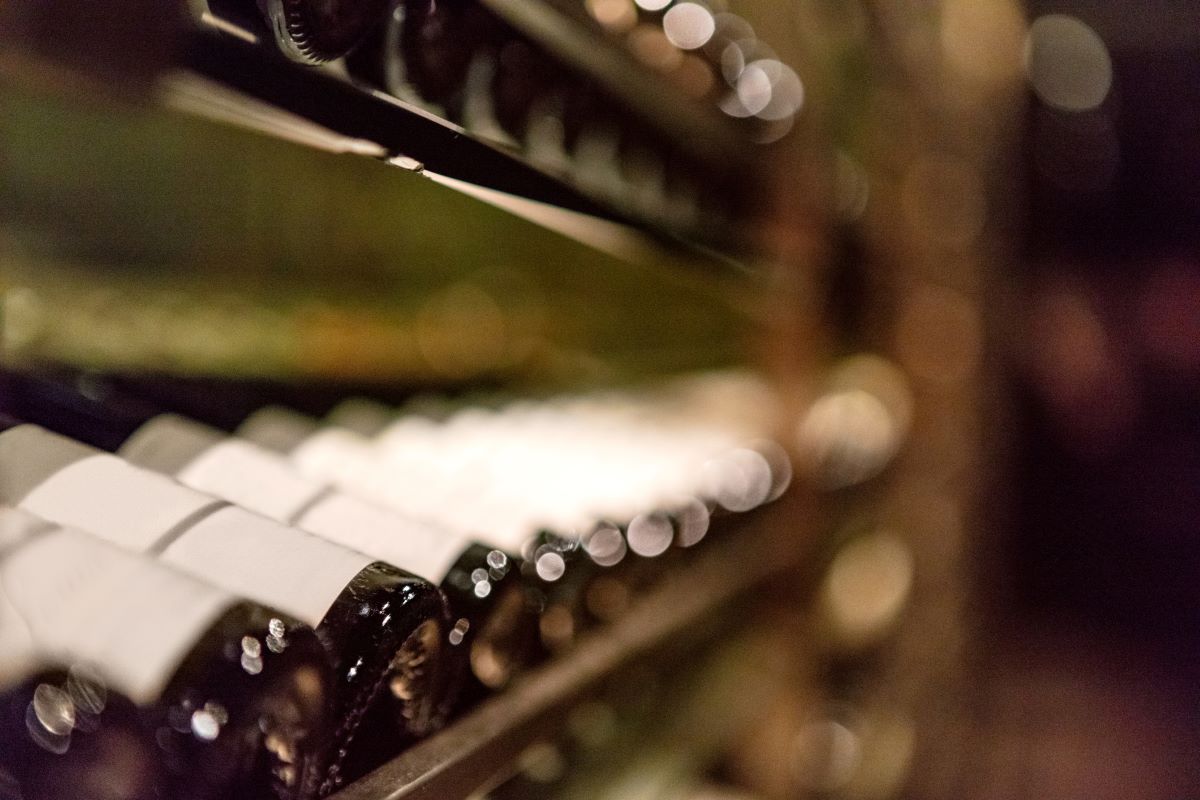
Proper Cellaring Conditions
There are few experiences that can match a wine tasting. The anticipation of the tasting as you drive through the countryside. Driving up a small road to the top of a hill overlooking rolling hills of green vines. Admiring the beautiful scenery of a cloudless blue sky and the warmth of the sun. While you enjoy conversation and the surprise of each wine, each taste and moment are ephemeral. This bottle of wine is at its best, but how will it evolve over time? What transformation will take place over the course of a few years or decades? How do you help it get there? With time and the right conditions, you will be able to properly cellar this wine. We will take the guess work out of cellaring so that you can enjoy the complexities that only years of properly aged wine can provide.
What Is Cellaring?
Cellaring is providing specific conditions to age wine so you can experience how it changes over the years. You have enjoyed your tasting and bought your favorite wine. It is always best to ask if the selected wine will benefit from aging and about how long the wine’s aging potential is estimated to be. This information is crucial because many wines do not need to be cellared or aged. It is important to note that although all wines can be stored in a cellar, not all wines should be cellared.
Keys To Cellaring
There are some basic principles to cellaring. Think like a cave. All wine was originally stored underground because those conditions, as it turns out, are perfect for storing and cellaring wine. By following these principles below, you’ll provide the perfect environment to properly cellar your wine.
Wine Storage Temperature
This is one of the most important things about aging wine. Temperature fluctuations are the enemy of wine. The ideal temperature for cellaring is between 55-60 degrees Fahrenheit or about 13-16 degrees Celsius. If the area you plan to age your bottles in is slightly warmer or cooler, that’s okay so long as the temperature stays relatively constant. For example, a room that’s constantly 63 to 64 degrees is better than one that is 57 degrees one day and 67 the next. Wine likes consistency.
Humidity In The Wine Cellar
Humidity is important because the cork in your bottle needs to remain hydrated. A hydrated cork reduces the amount of air that can enter the bottle through it, which is what leads to aging. The Ideal humidity is 70 percent with a safe range between 50-80 percent. If your cork gets dry, it doesn’t mean the wine is instantly going to go bad, but it does run the risk of aging faster.
UV Protection For Wine Storage
Light, specifically sunlight and UV exposure is the enemy of most beverages. It causes the breakdown of the flavor compounds within the wine and can lead to off putting flavors. Ideally, no light while stored is best, but the darker the better and no sunlight if possible. If you buy a wine storage solution such as a wine refrigerator. One thing to be aware of with these units is that many have glass doors and can allow wine to be exposed to light. So, making sure that the wine is not subjected to UV light is critical.
Vibration And Wine Storage
While cellaring, letting the wine remain still allows oxygen to slowly enter the bottle. Constant movement of the wine can change the rate at which oxygen ages the wine. So picking an ideal position for the bottle and leaving it will help let the wine age on its own terms. Also, when cellaring, if there is a lot of movement or vibration, this can cause sediment in the wine to be stirred and unsettled, changing its flavor profile.
Wine Cellar Management
While not required, both suggestions are helpful for keeping track of what is happening in your cellar.
Having a detailed list or using an inventory app is not needed, however, if you find yourself with a growing collection it helps to know which of those wines might be nearing its peak and finding a good occasion – say a birthday or an anniversary – to enjoy said bottle after it’s evolved.
In Summary
First, all wines can be stored in the above conditions, but remember not all wines benefit from the aging and cellaring process. Make sure you know which wines in your collection will benefit from this magical in-bottle evolution and which ones won’t. Cellaring wine has been done for thousands of years and is very achievable whether you are a novice wine collector or an avid wine enthusiast. It begins with creating a space that follows the principles of temperature, humidity, light and vibration management. These spaces can be purchased, like a stand-alone wine refrigerator that controls temperature and humidity settings to emulate cellar conditions. Or, with some DIY, you can create your own wine cellar. There are many helpful DIY blogs and videos that can walk you through this process. When you have your cellar and follow the principles – Wine Storage Temperature, Humidity in Wine Cellar, UV protection for Wine Storage, Vibration and Wine Storage, and Wine Cellar Management – we have no doubt that you will be successful in all your cellaring endeavors. We raise a glass to your future success as you enjoy a special wine in your future.
Cheers!
Interested in learning more about aging and cellaring? Discover how our wines are ageable or learn about Winemaker Marcus Notaro’s Rule of Three.




